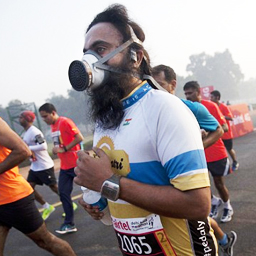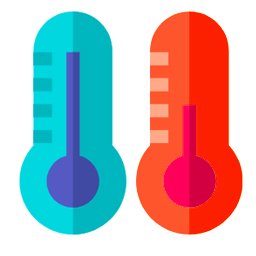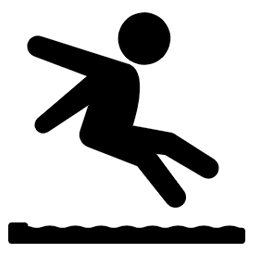

Last year, a major controversy erupted before the annual New Delhi Half-Marathon that takes place in the Indian capital. Doubts were raised by environmentalists and health professionals about the appropriateness of running the half-marathon in the city at a time when pollution had reached dangerous levels and a smog had been overhanging the city.
After a great deal of debate, the event did take place and the top athletes who had been scheduled to take part went ahead with their participation.
But this was a prime example of how growing pollution in major cities of the world is starting to affect sports events, especially those involving intense physical activity like long-distance running.
As a fan of long-distance running, this leads me to think: if growth of local pollution is having this effect, what will be the result of the worldwide phenomenon called global warming on this group of sports?
The situation in New Delhi was peculiar to that region and had arisen due to local circumstances but isn’t it a matter of time before the demon of global warming starts having an effect the world over on running sports?
1. Effects Of Rising Temperatures On Marathons
It’s ironic that marathons have become a great tool for activists to raise social issues and noble causes. The reason being that global warming is one of them and it may end up affecting these very runs.
It’s not hard to imagine what would happen to marathons and half-marathons if global warming continues to materialize all over the world.
Here is a list of possible ramifications:

– Erratic Weather
Usually marathons are held in the most suitable weather for running. In hot countries, that would be winter while in countries where the winter is harsh, it is summer or spring.
But due to global warming, we are witnessing weather patterns changing and strange weather events taking place.
This would create problems for organizers as they would find it hard to choose the right time for holding these events.

– Impact On Runners
The participants in these marathons, especially the elite runners, would find it tough to produce their best performances. Rise in temperatures will slow down their timing and that would reduce the occurrences of records being broken and personal best timings being achieved.
Research on the timings of Marathons has revealed that racers are becoming slower and not getting the same help from conditions that they did in the past.
A study conducted over a period of 20 years and taking into consideration 4.7 million finishing times from 900 marathons has discovered how temperatures affect timings of runners.
According to this survey, the best temperature for running marathons is in the 40s (degree Fahrenheit).Temperature in the 50s result in timing getting increased by around five minutes compared to those when the weather is in the 40s.
2. Effects Of Increased Weather On Future Planning Of Marathon

In 2007, increasing temperatures caused the Chicago Marathon to be stopped with temperatures reaching as high as 80 degrees Fahrenheit. This may become a cautionary tale for organisers of future Marathons.
It may also result in Marathons being shifted to places which have a cooler climate. Cities further North may become the best venues for marathons, especially in the summers of those regions.
If the venues are not shifted, the timing of the marathons will certainly change with the dates being moved to the winter season rather than being kept for those times of the year when there is the chance of heat suddenly rising.
The manufacturers of the equipment will also have to become proactive in developing equipment that would increase the comfort of runners during the marathon. So, for instance, the jersey of the runners is now being designed in such a way so as to ensure greater flow of wind through it.
There are even jerseys now which have air-conditioner placed inside them! While these may not be available to the athletes in the near future, who knows what will happen many years from now?
The biggest impact, however, would be on the athletes training patterns for the marathon. It has been proven that training before the marathon is extremely important. Athletes that don’t train before the marathon are unable to produce their best. So, as temperatures change, the value of pre-marathon training would also increase with the runners requiring greater acclimatization to the weather.
3. Other Ways In Which Climate Change Would Impact Marathons

In long-jump and triple jump events, the wind speed is taken into account for managing records. If a jumper is greatly assisted by winds, then his record is adjusted so as to not put those who jumped an equal distance without the wind assistance at a disadvantage.
This may also happen with marathons. The temperatures in which the race is held might be, in future, factored in when records are being judged.
Another area where the organisers of the marathons will have to take effective measures is in increasing the number of points where the runners are provided assistance in the form of liquids and refreshments. Also, the type of substances allowed to be taken by the athletes need to be expanded to include those drinks which restore the level of salts in the body.
Providing showers along the way may be another step to keep the marathoners going as a little dousing in water may just be what they need. Furthermore, there is also the need for athletes to change their training patterns is such a way so as to incorporate the weather changes.
Practice makes a man, and woman, perfect and the more the athletes attune their bodies to running long-distances, the better chance they will have of achieving great results in marathons as well as improving their personal best.
